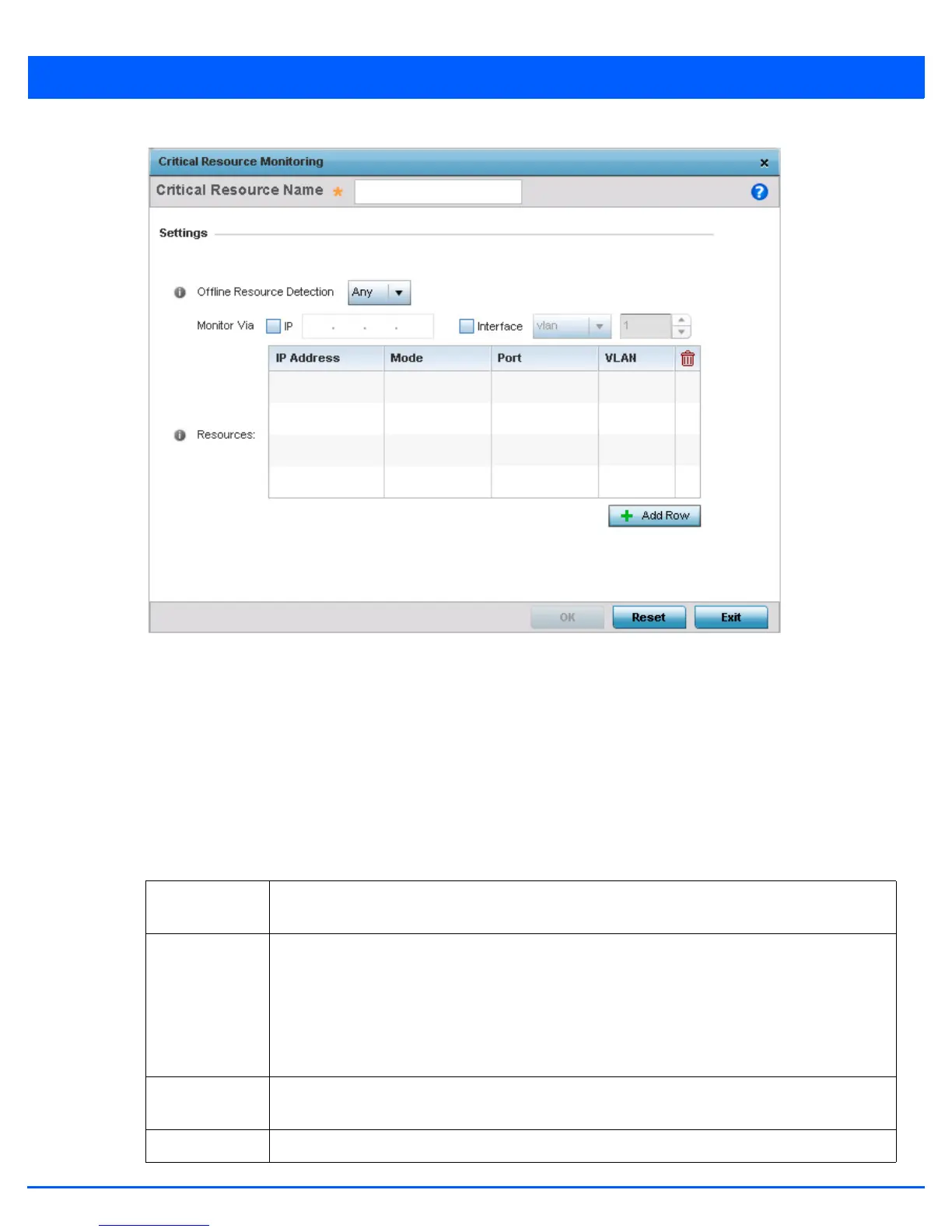Device Configuration 5 - 353
Figure 5-237 Device Overrides - Critical Resources screen - Adding a Critical Resource
6. Use the Offline Resource Detection drop-down menu to define how critical resource event messages are generated.
Options include Any and All. If selecting Any, an event is generated when the state of any single critical resource changes.
If selecting All, an event is generated when the state of all monitored critical resources change.
7. Select the IP option (within the Monitor Via field at the top of the screen) to monitor a critical resource directly (within
the same subnet) using the provided critical resource IP address as a network identifier.
8. Select the Interface option (within the Monitor Via field at the top of the screen) to monitor a critical resource using either
the critical resource’s VLAN, WWAN1 or PPPoE1 interface. If VLAN is selected, a spinner control is enabled to define the
destination VLAN ID used as the interface for the critical resource.
9. Select + Add Row to define the following for critical resource configurations:
IP Address Provide the IP address of the critical resource. This is the address used by the access point to ensure
the critical resource is available. Up to four addresses can be defined.
Mode Set the ping mode used when the availability of a critical resource is validated. Select from:
• arp-only – Use the Address Resolution Protocol (ARP) for only pinging the critical resource. ARP
is used to resolve hardware addresses when only the network layer address is known.
• arp-and-ping – Use both ARP and Internet Control Message Protocol (ICMP) for pinging the critical
resource and sending control messages (device not reachable, requested service not available,
etc.).
Port Provide the port on which the critical resource is available. Use the spinner control to set the port
number.
VLAN Define the VLAN on which the critical resource is available using the spinner control.

